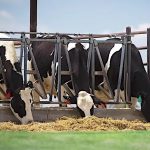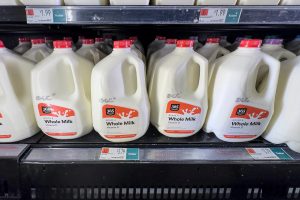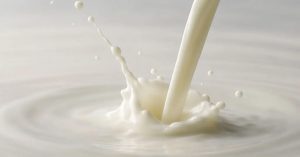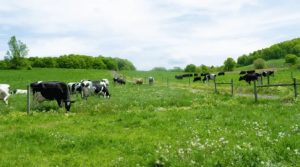Richmond said alfalfa works better for him as part of a pasture blend than as a mechanically harvested crop. The animals will pick off the leaves and then it recovers within a week – whereas cutting it results in a month for regrowth. Impressive rain through this past summer allowed him to cut hay on most of his pastures for winter feed.
This year he grew 63 acres of corn for silage that he mixes with the alfalfa baleage in his winter ration. He purchases a minimum amount of grain to supplement, he said. Lately he’s been experimenting with cereal rye followed by sorghum for a feed source.
A big change for Richmond was removing his calf hutches, instead using outdoor group pens for his calves. He had observed a couple of calves that were routinely escaping and stealing milk from the others. He realized they gained better than the other animals without side effects. So he started allowing all the calves to drink as much milk as they wanted – and noticed an immediate improvement in overall health. He ensures milk temperature is at 100 degrees, and they have access to water, grain and straw.
He grows his bulls, which he said saves time compared to artificial insemination. He picks his bulls by production of the dams, commenting that “numbers say it all.” He leaves his bulls with the herd from July 1 to Jan. 15 to avoid winter calves, because of his lack of good facilities for handling them.
Richmond summed up his farming enterprise when he said, “I love grazing.”
This is an original article written for Agri-View, a Lee Enterprises agricultural publication based in Madison, Wisconsin. Visit AgriView.com for more information.
You can now read the most important #news on #eDairyNews #Whatsapp channels!!!
🇺🇸 eDairy News INGLÊS: https://whatsapp.com/channel/0029VaKsjzGDTkJyIN6hcP1K
























